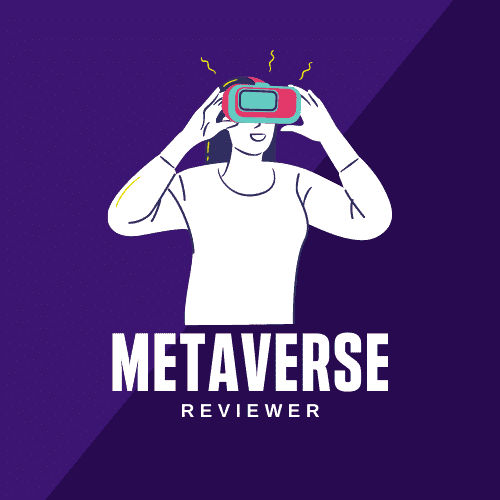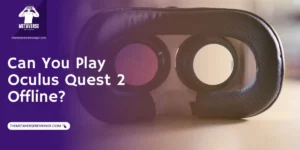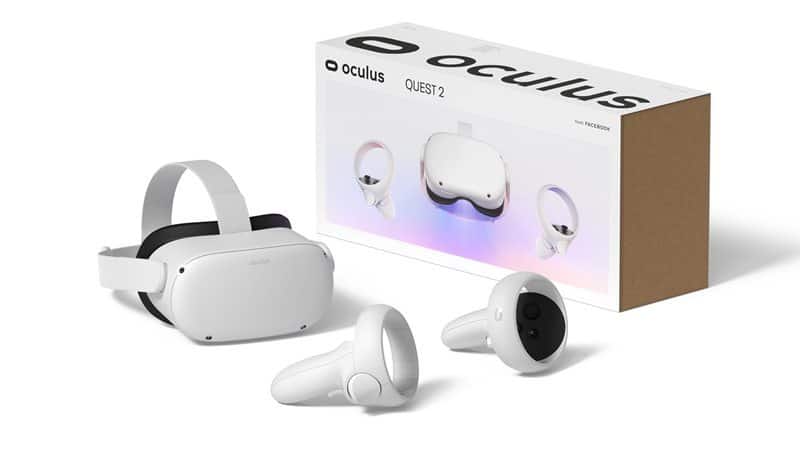Oculus Quest vs. Oculus Quest 2: What’s the Difference?
- By Lara Raven
- July 8, 2023
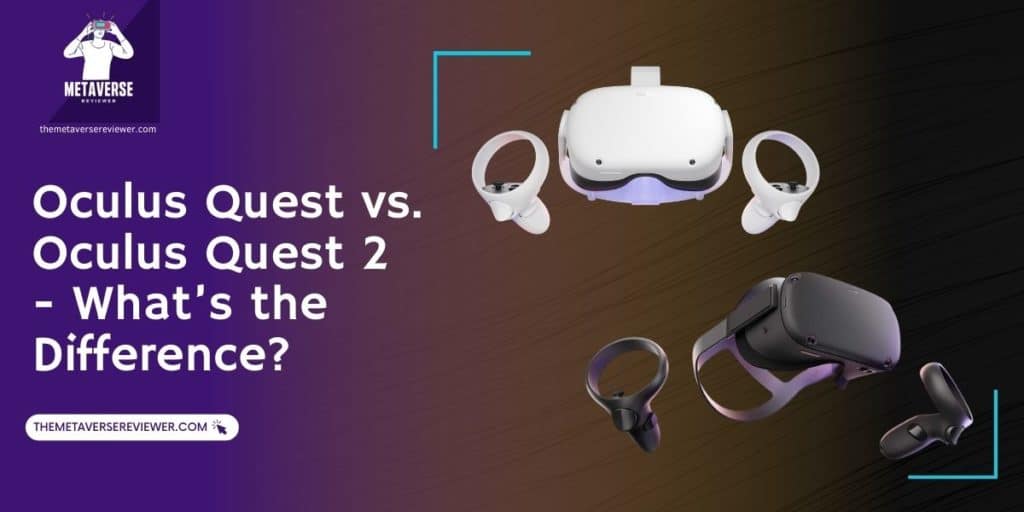
Disclaimer: This site may contain links to affiliate websites, which we may receive compensation if you purchase these products
As you might have guessed, the new Oculus Quest 2 VR headset is the new and improved version of the brand’s previous release, the Oculus Quest. There’s no doubt that the Oculus is considered to be the best VR headset for virtual reality experiences, and its latest addition is surely giving users a fabulous run for their money!
Though similar in some ways, the main differences between the Oculus Quest and the Oculus Quest 2 lie in their individual performance.
Though the Oculus Quest has earned its fabulous reputation among users, the Oculus Quest 2 comes far more refined and makes for more intense and realistic VR experiences. As a brand, Oculus falls under Facebook’s lineage of products and is expected to even be implemented as a front-liner in Facebook’s Metaverse project.
As for what sets the Oculus Quest and Oculus Quest 2 apart, especially in terms of innovation, here is a detailed head-to-head comparison of the two headsets.
Which Product is Better?
The Oculus Quest products are considered to be one of the most sophisticated on today’s market. No matter which headset you ultimately choose, both will do their designated job to perfection.
Still, like all similar tech products today, there are some key differences between the Oculus Quest and the Oculus Quest 2. So, choosing the right fit will basically depend on what you need out of your product.
For instance, the original Oculus Quest VR set comes with a lightweight design and hardware capabilities that make the product a more affordable alternative to, say, saltier VR headsets out there. Likewise, the product doesn’t need to be connected to a gaming PC or a laptop to work – a cute feature that has been slightly improved in the Oculus Quest 2.
It is for this reason only that users worldwide prefer the Oculus Quest 2 before its predecessor.
When it comes to the Oculus Quest 2, the new design features a new head strap, which enables easier head adjustment, and therefore, greater comfort. Unlike its former kind, the Quest 2 has the option to switch lenses, something that was not available with the standard Oculus Quest.
Recognizable Design
There is no vast difference between the two Oculus Quest virtual reality headsets in terms of design. Both products have similarities in terms of design and color – the Oculus Quest comes in all white whereas the Quest 2 impresses in bold black.
On another note, the Oculus Quest 2 also arrived with a few new – and dandy – features. The main one is its option to change the lens into 3 different setting positions: 58mm, 63mm, and 68mm. The Quest 2 VR headset design was envisioned so it allows greater simplicity alongside superb easiness of use.
The only element that stayed the same in both headset versions is their speakers.
Both product speakers are built within the headset in order to deliver a perfect sound straight to your ears and without any outside noise. The Quest 2 has an integrated microphone on its headset, thus allowing you to communicate with other Oculus VR headset users.
When it comes to its weight, the new Oculus Quest 2 is approximately 10% lighter than the known Oculus Quest, – about 503g lighter that is. The new Quest features a new faceplate outlook and it has a new and improved design. It offers a lighter feel when gaming, something that certainly makes for a far better experience, compared to the one provided by the original Quest.
Improved Screen Resolution
Since the Oculus Quest 2 is a newer release, it’s naturally expected to have a better screen resolution than its predecessor.
So, the improved screen resolution on the Quest 2 is 1832×1920 per eye. At the same time, the first Oculus headset has a screen resolution of 1440×1600, so the improvement is significant and notable. That’s around 50% of change, for those doing the math right about now.
Besides, the new Oculus Quest 2 VR headset comes with a full HD LCD screen, unlike its former keen, which used an OLED headset screen.
The reason why the initial Quest headset used this screen is to allow all screen pixels to glow by themselves.
Unfortunately, this was not the case with the new LCD screen, seen in the Quest 2, which comes with several LED lights adjacent to its screen.
Another slight setback in using the LCD screen is its black color which cannot be 100% displayed on the screen – something unseen in the former, OLED screen.
Bigger Battery Life
Unlike the first Oculus Quest VR, which ranked among the best VR headsets in 2021, the Quest 2 VR uses a couple of intelligent systems of batteries to maximize battery life – in both the headset and its controllers.
This option allows the new Oculus Quest 2 to enter sleep mode when it hasn’t been used for a period of time. In other words, the VR headset will automatically turn on when you pick it up and put it on.
Still, just like the initial Oculus Quest, it has the same battery life that lasts up from 2 to 3 hours. Both VR headsets can be charged with a USB-C cable, with the Quest 2 charging fully in two hours, tops.
Price Range
Another pivotal difference to mention between the two Quest products is their price.
If you are looking for the best budget VR headset, the Quest products are right up your alley. Namely, the cost of the senior Quest VR headset comes at $380, whilst its follower costs $288, despite all its improvements. The reason for the new and refreshing Oculus Quest 2 price is simple – Facebook requires a login to grant you access.
As the new owner of Oculus, Facebook has apparently taken great advantage of the user data the Oculus VR gathers, which becomes available as soon as they log in.
The price of the Oculus Quest 2 is expected to remain the same for the foreseeable future, or until a new Quest is released.
Oculus Quest vs. Oculus Quest 2
| Feature | Oculus Quest | Oculus Quest 2 |
|---|---|---|
| Design | All white | Bold black |
| Switchable Lenses | No | Yes |
| Weight | Approx. 503g | Approx. 453g |
| Screen Resolution | 1440x1600 per eye | 1832x1920 per eye |
| Screen Type | OLED | Full HD LCD |
| Refresh Rate | 75Hz | 120Hz |
| Battery Life | Up to 3 hours | Up to 3 hours |
| Price | $380 | $288 |
| Controllers | Similar to Oculus Rift S | Similar with slight improvements |
Visual Changes
The Oculus Quest 2 has its visual quality significantly improved, compared to the classic Quest. The latest version boasts extra power under the hood and delivers 50% more pixels than the first Oculus Quest VR. This means the new Quest 2 is nearing 2k resolution per eye. Plus, it also comes with a faster refresh rate, which is nice. While the first Quest VR set had 75Hz, the refresh rate on the improved Quest 2 is now able to reach 120Hz, a significant increase when the two VR’s are compared.
Initially, the refresh rate was thought to be implemented, but was, sadly, denied by developers way before the Quest 2 hit the stores. The reason for this is that developers needed to unlock their games and get them to function properly. As a result, the visuals in the Quest 2 have also been improved – all by adding that extra pixel to the screen.
The Oculus Quest 2 still offers the Passthrough view. This allows all users to experience the world around them, using inside-out tracking – and the best VR camera for Oculus Quest’s newcomer. These features were also available in the first Oculus VR headset, and continue to work splendidly on the new one. To activate it, just double-tap the side of your headset, and you’re good to go.
When it comes to playing, the new Quest 2 supports all games the original Quest did – which makes for 200 games and counting!
Thanks to the Oculus Link’s latest addition, however, you can also play more PC games that support Virtual Reality goggles. Or, you can use the best VR camera for an Oculus Quest of your choosing.
The Specifications
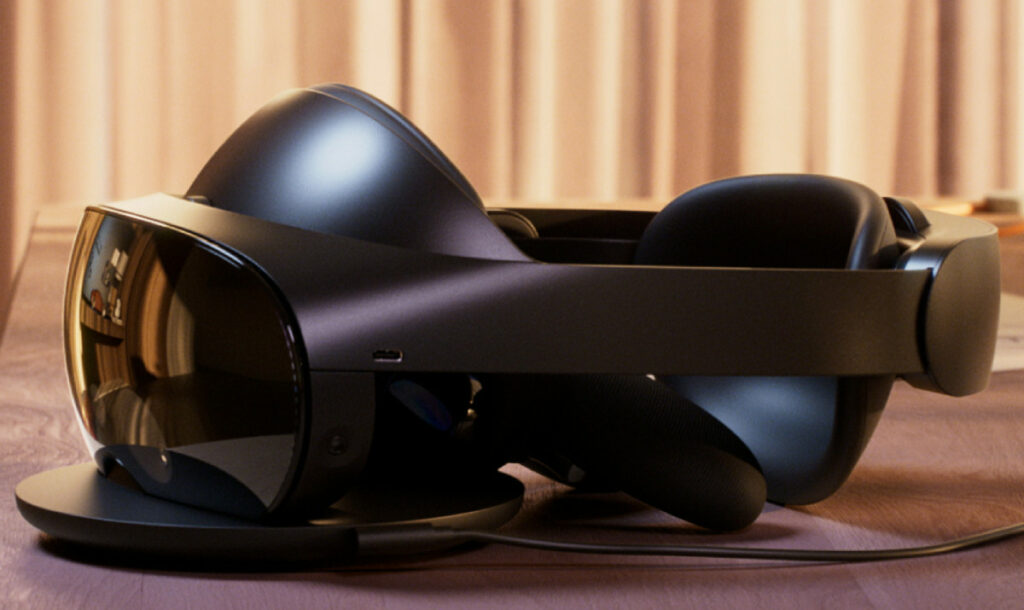
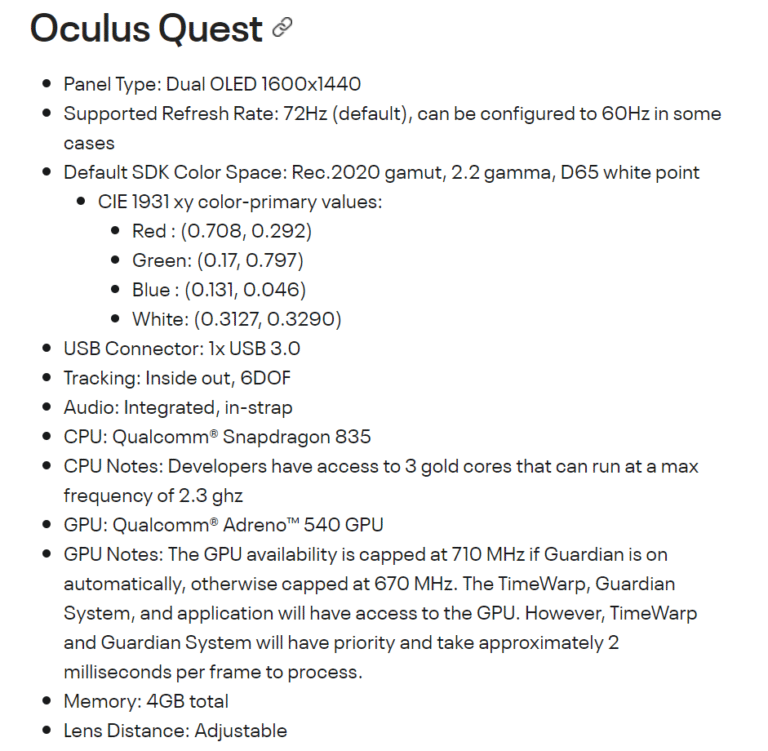
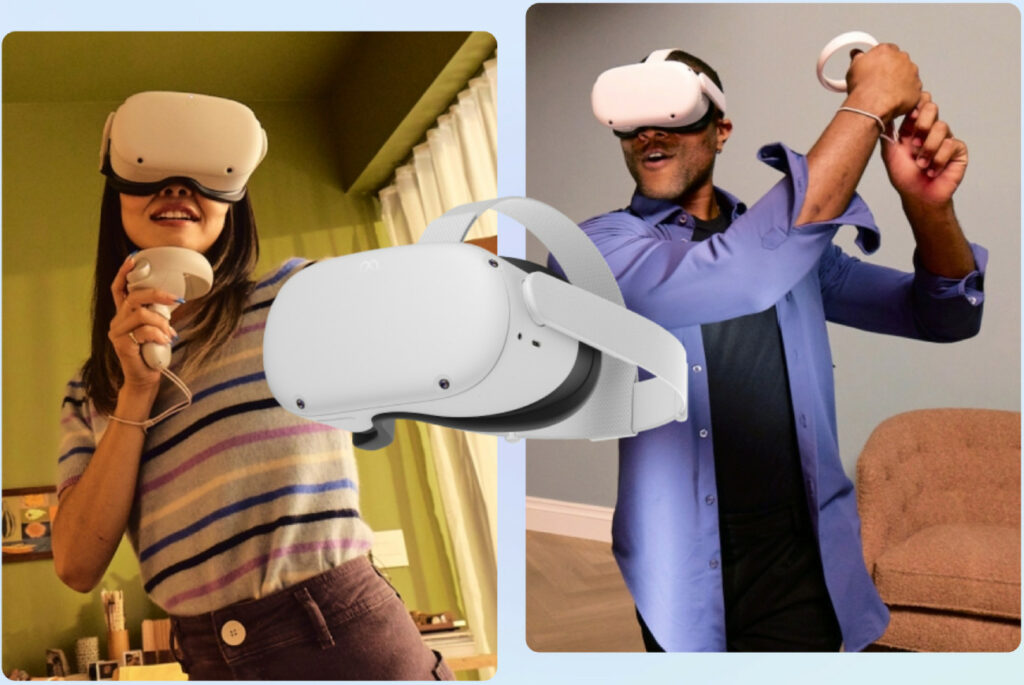
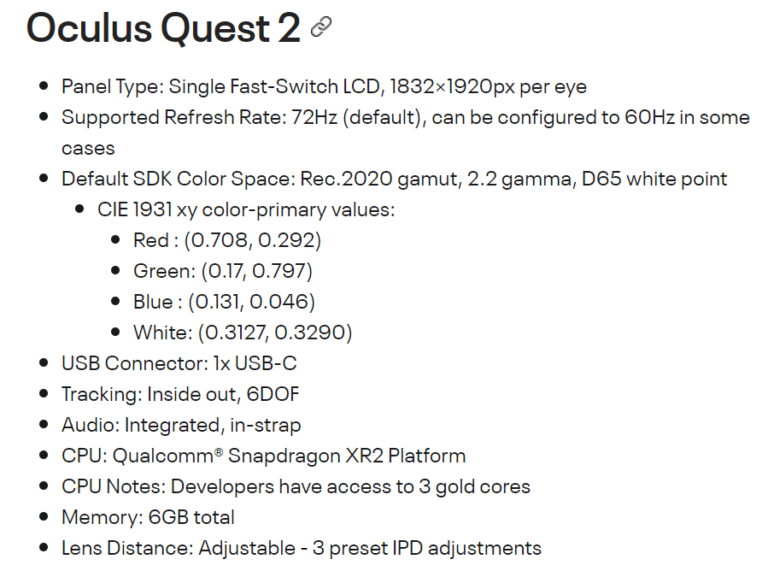
All about the Controllers
The controllers make another addition to the Oculus Quest product that has stayed, more or less, the same. Although there are some slight changes to the new design, the controllers remain 90% similar in both Quests. The inspiration behind the design was driven by the Oculus Rift S. Besides, the controllers’ familiar shape and size allows a larger space for your thumbs when handling them. This extra room also grants better motion when gaming with the Oculus Quest 2, though the experience won’t differ by much even if you decide to stick to the original Oculus Quest VR.
The controllers’ batteries on both Quests are single AA, though the new controllers have been redesigned with lesser LED tracking. This happened so the battery life improves. The Oculus VR creators claim that the improved controllers on the Quest 2 will work 4 times longer than the original product controllers – great news for all VR gaming enthusiasts out there!
Still, like the first Quest, the control on the Quest 2 can last for 3-4 hours, before it needs recharging. As mentioned before, the batteries can be charged with a USB-C cable, and the Quest 2 controllers can reach 100% in around 2.5 hours of charging.
Final Verdict
All in all, there is no groundbreaking difference that sets the Oculus Quest and Oculus Quest 2 apart. Other than the roominess in their controllers, the slight design boosts here and there, and a few more tweaks, either of the two headsets makes a fabulous product to use. However, if searching for the best budget VR headset, the latest addition does come at a fairer price.
As the Quest 2 is the new prized possession among VR enthusiasts – and it does show occasional improvements – it might turn out to be the perfect fit for you.
If you don’t mind sticking with a good ole’ classic, however, the Oculus Quest will serve you well.
- Gemini vs. GPT4 – Which One to Use? - December 17, 2023
- Can You Play Oculus Quest 2 Offline Without Wifi - November 10, 2023
- VR Sickness – What You Need to Know - September 17, 2023
